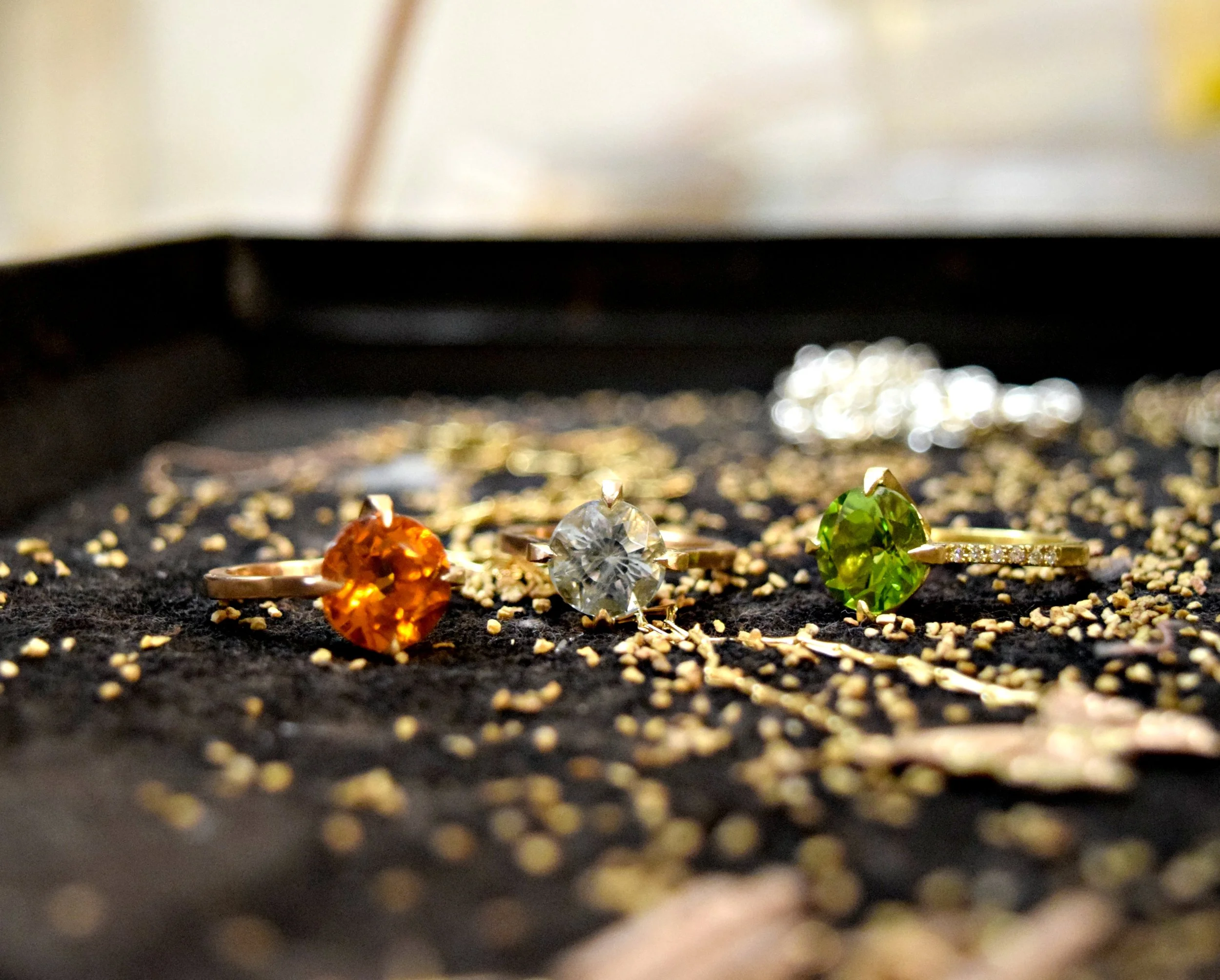Peridot
Peridot is known as the gem-quality variety of olivine. It's an idiochromatic gemstone, which means that the colour comes from the chemical composition of the stone itself, and not from impurities. Therefore peridot can only ever be found in green, but may vary between a pale yellowish green, olive green, bottle green, or an intense vibrant apple green, the latter being the most desirable.
The material is transparent, but can contain a wide selection of inclusions, the most common referred to as 'lily pads' and 'fingerprints' based on the patterns they create. The principal attraction of the stone is its beautiful colour and high lustre, which is enhanced by proper cutting. Step and table cuts are the most common, but there are also brilliants, roses and various cabochons available.
The best cutting material comes from Pakistan, close to the Afghan border. The high cost of bigger, intensely coloured stones reflects not only the difficulty of finding large 'clean' material, but also the length of time it takes to cut and polish peridot. Smaller amounts of peridot have however been discovered in some meteorites, and even been found in basalt rocks on the moon.
Sources:
Judith Crowe, The Jeweller's Directory of Gemstones (London: A&C Black, 2006)
Cally Hall, Gemstones (London: Dorling Kindersley, 1994)
Jaroslaw Bauer and Vladimir Bouska, A Guide in Colour to Precious & Semiprecious Stones (London: Octopus Books, 1983)

